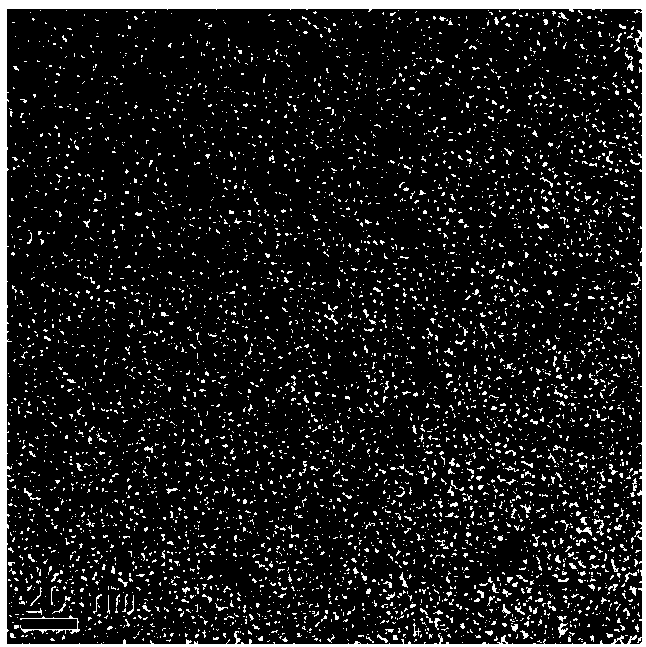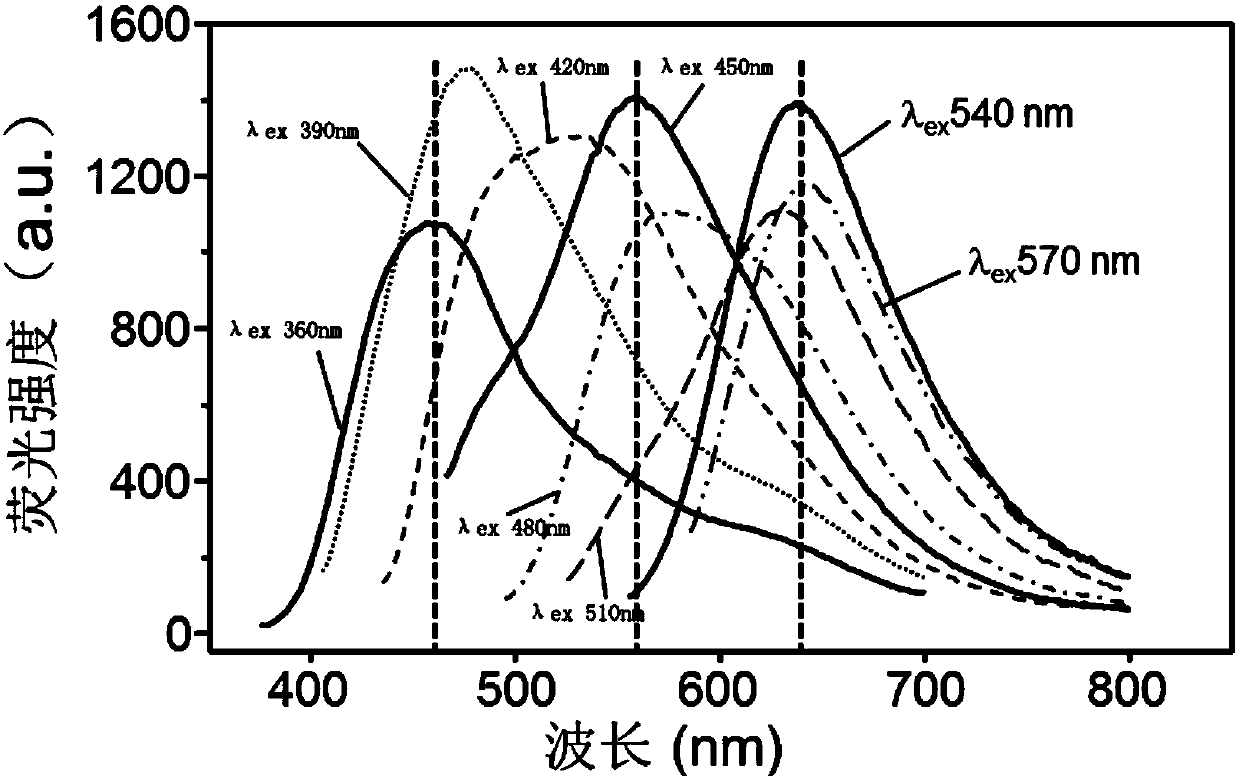Fluorescent indicator combination, fluorescence array sensor, preparation methods of fluorescent indicator combination and fluorescence array sensor and application
A fluorescent indicator and fluorescence technology, which is applied in the direction of fluorescence/phosphorescence, instruments, scientific instruments, etc., can solve the problems of complex processing process, insufficient sensitivity, complex processing, etc., and achieve simple detection process, strong anti-interference ability, and simple production process Effect
- Summary
- Abstract
- Description
- Claims
- Application Information
AI Technical Summary
Problems solved by technology
Method used
Image
Examples
preparation example Construction
[0047] Further, the preparation method of the present invention comprises the following steps: (1) selecting metal ions with high sensitivity and high selectivity to antibiotics, forming F-CDs-metal ion complexes, and constructing fluorescent indicators; (2) selecting suitable (3) Use a fluorescence spectrometer to record the fluorescence intensity of the fluorescent indicator before and after adding antibiotics to construct a fluorescent array sensor.
[0048] The technical solution, its implementation process and principle will be further explained as follows.
[0049] As an aspect of the technical solution of the present invention, it relates to a fluorescent indicator combination, which includes a variety of full-color fluorescent carbon quantum dots (F-CDs for short) and a variety of metal ions formed under different pH conditions. Carbon quantum dots-metal ion complexes (referred to as F-CDs-metal ion complexes).
[0050] In one embodiment, the fluorescent indicator com...
Embodiment 1
[0112] The construction of embodiment 1 multi-channel fluorescent array sensor
[0113] (1) Screening of fluorescent indicators:
[0114] In order to achieve a clear distinction of multiple classes of antibiotics without cross-interference with each other. When constructing the fluorescent indicator, based on the quenching degree of metal ions to F-CDs, the metal ions were screened, and the metal ion Fe 2+ , Fe 3+ 、Co2+ 、Ni 2+ 、Cu 2+ , Zn 2+ 、Cd 2+ , Hg 2+ , Pb 2+ 、Ag + 、Cr 3+ 、Ce 3+ and Eu 3+ Three kinds of metal ions that have a greater degree of quenching of F-CDs and a stronger ability to bind to antibiotics were screened, namely: Cu 2+ 、Ce 3+ 、Eu 3+ , that constitutes F-CDs-Cu 2+ , F-CDs-Ce 3+ , F-CDs-Eu 3+ Three fluorescent indicators.
[0115] (2) Selection of fixed formula:
[0116] 1) F-CDs (5μg / mL) and Cu 2+ (10 μM) was dissolved in 2 mL of HEPES buffer (10 mM) at pH 7.4, and reacted at room temperature for 5 min to obtain formula 1;
[0117] 2) ...
Embodiment 2
[0127] Embodiment 2 Construction of multi-channel fluorescence array sensor
[0128] (1) Screening of sensing units
[0129] In order to realize the detection and differentiation of four major antibiotics such as tetracyclines, quinolones, β-lactams and aminoglycosamines, 18 response points were screened according to the discrimination effect of different antibiotics, and 8 response points were selected (sensing unit) can realize the distinction of multiple antibiotics, and the specific formulas of the screened 8 response points are as follows:
[0130]
[0131] (2) Add the antibiotic to be tested to the above 8 response points, and after reacting for 5 minutes, record the fluorescence changes before and after adding the antibiotic respectively, and through normalization processing, the obtained data can be analyzed by PCA and HCA to determine different types Discriminative effect of antibiotics.
PUM
 Login to View More
Login to View More Abstract
Description
Claims
Application Information
 Login to View More
Login to View More - R&D
- Intellectual Property
- Life Sciences
- Materials
- Tech Scout
- Unparalleled Data Quality
- Higher Quality Content
- 60% Fewer Hallucinations
Browse by: Latest US Patents, China's latest patents, Technical Efficacy Thesaurus, Application Domain, Technology Topic, Popular Technical Reports.
© 2025 PatSnap. All rights reserved.Legal|Privacy policy|Modern Slavery Act Transparency Statement|Sitemap|About US| Contact US: help@patsnap.com



